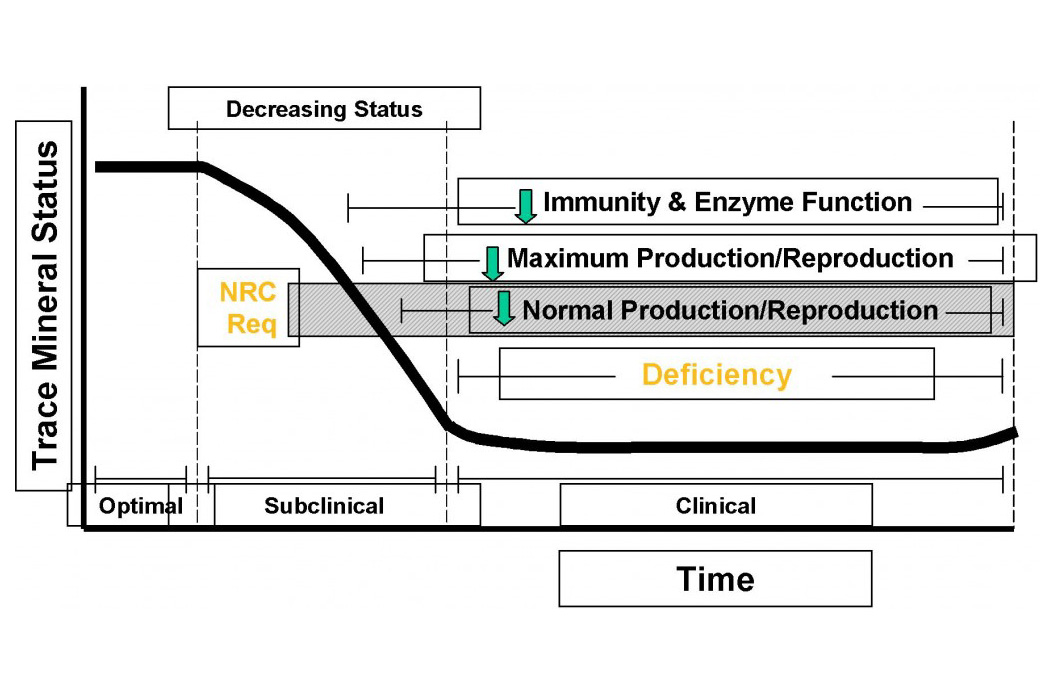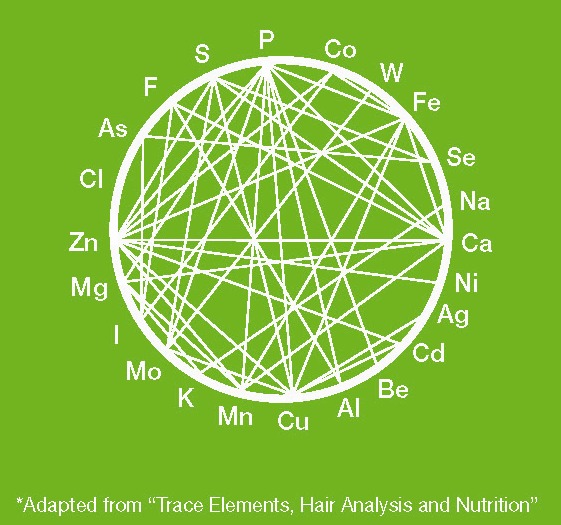Mineral Levels & Ratios in Horse Diets

Mineral Interactions in Horses
A major factor to consider when looking at the mineral profile of a feed is the interaction of different minerals. Not only are the levels of each individual mineral important, but so are the ratios in which those minerals are present with each other.

As you can see from the image above, the level of copper (Cu) present has a direct effect on Zinc (Zn), Iron (Fe), Molybdenum (Mo), and Sulfur (Su). This effect is the reason that single nutrients should not be focused on unless there is a known and quantified deficiency or excess of a certain mineral in the animal. Addition of a single nutrient in large quantities may visually solve one problem in a horse (i.e. their coat got shinier), but what else is going on behind the scenes is often hard, if not impossible, to tell.
Of course, this is not meant to downplay the fact that individual levels of minerals are important as well. Depriving or overdosing a horse for a short time may not have a significant effect immediately that is visible to the average horse owner (termed “clinical signals”). However, it does not take long for “subclinical” deficiencies or toxicities to begin to occur. These are not visible to the naked eye, but still can have a profound effect on the health of an animal. Eventually, they will show up, but there is no guarantee that if the deficiency or toxicity is fixable by the time the clinical symptoms are seen.

A prime example of this would be a pregnant mares diet, and it’s effect on the foal. A mare in the first two trimesters of pregnancy needs a quality diet, but it doesn’t have to be much higher than a maintenance level diet. However, many requirements increase by 50% or more when that mare hits the last trimester of pregnancy and after that when she goes in to lactation. Not feeding her a balanced diet designed for the stage she is in may not leave her looking bad in the immediate time frame, but improper mineral levels or ratios could be severely detrimental to the foals health, to the mares health down the road, or even her ability to re-breed efficiently.
